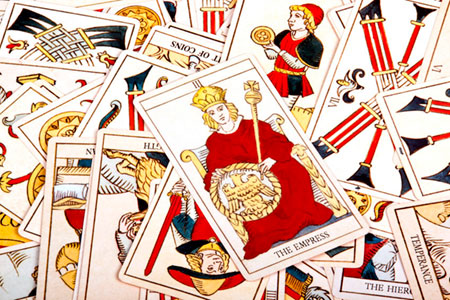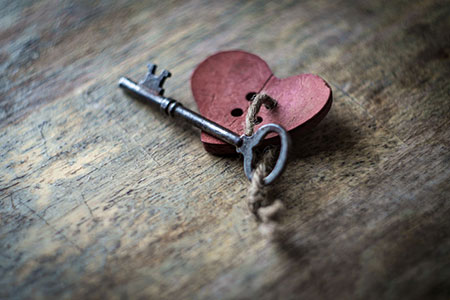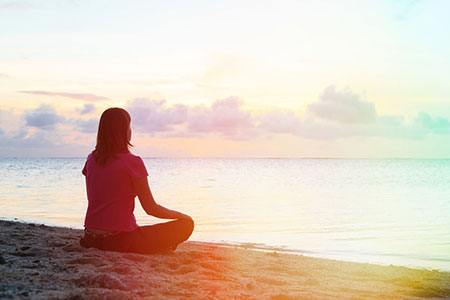culture
A Unique Time For Human Connection
 This is a unique opportunity in human history. We have more time now to expand our awareness and understanding, and to take the guidance from the sages of the ages to find peace in a tumultuous situation. One of the most unique aspects of the current situation is related to human connection.
This is a unique opportunity in human history. We have more time now to expand our awareness and understanding, and to take the guidance from the sages of the ages to find peace in a tumultuous situation. One of the most unique aspects of the current situation is related to human connection.
At a time when we are being asked to practice social distancing, we also have a unique opportunity to be connected through social media and video conferencing. I am amazed at the opportunity that the miracle of technology has given us. Many of these technologies were not available 20 years ago.
Recently, I have been seeing stories about the kindness and compassion people are showing during this time. All the communication technology we have at our disposal enables us to connect with one another at a deeper level.
I would also recommend not focusing too much of your mental and emotional attention only on yourself at this time. The current situation is not just about you, and when we focus too much energy on what we are going to do or how this will affect us on a personal level, it only increases our sense of anxiety about the unknown.
If you are currently finding yourself with more free time, also do not just use this as an opportunity to only binge on television or movies. I am not saying that there is anything wrong with watching television or movies, but this is also an opportunity to expand your interpersonal connections in a unique way. This is a time where we can extend our energies on compassion and kindness toward our fellow humans.
Finding Hope In A Scary World
 The recent events worldwide are terrifying and daunting for most of us. Due to the Covid-19 pandemic our world is not well, and we are all in need of courage, hope and healing.
The recent events worldwide are terrifying and daunting for most of us. Due to the Covid-19 pandemic our world is not well, and we are all in need of courage, hope and healing.
We cannot control the entire world, or every aspect of our future, but we surely can choose how we react to what is happening to us, and to the world.
Although the world is scary right now, know that there are opportunities for personal and spiritual growth for all of us during this time. Consider the following to make the most of the current circumstances.
Mindfulness
Take a deep breath. Hold it. The release, and repeat. Cultivating a calm, hopeful approach to the challenges we will encounter over the next several months, will bring you peace as you navigate through this time.
Take some time every day to find your calm place within, where you can focus on hope and inner peace. Meditate and calm your fears. Spend some time in your ‘happy place.’
Finding The Calm Within
 Be afraid. Yes, be afraid. Be so very afraid! We are currently being bombarded with this message, not only daily, but hourly. People are very worried, anxious and fearful for a variety of valid reasons. To be honest, I believe our greatest source of anxiety is that we no longer seem to have much control over our lives.
Be afraid. Yes, be afraid. Be so very afraid! We are currently being bombarded with this message, not only daily, but hourly. People are very worried, anxious and fearful for a variety of valid reasons. To be honest, I believe our greatest source of anxiety is that we no longer seem to have much control over our lives.
In the modern world we have become so conditioned to mindless purchasing, consuming, and discarding, that we hardly give much thought anymore to our daily habits and lifestyle choices, whether useful or not. We also expect and demand certain privileges and freedoms, and it is shocking to have our normal, everyday routines disrupted, especially when we have no idea when things will return to normal.
I feel this is actually the most frightening aspect of the current circumstances for most people. We feel that we have lost control over our lives. And every morning, we tune back into our daily update of doom, gloom and negative dialogue, which of course only resets our fright buttons!
A better way to start your day would be to take a few minutes to reconnect to the safe and secure part of yourself, namely the inner spirit. Here, all is well, all is serene, and all is safe. Become mindful of your breathing and calm your mind. Then do a visualization that creates a sense of joy, peace and serenity.
The Year Of The Emperor
 During my psychic Tarot readings, I often ask my clients for the month, day, and year of their birth, so that I can equate their Tarot lifetime archetype and current year cards. Tarot numerology has always been spot on in my readings, and it has also been accurate on a grander level, when looking at the current year in general.
During my psychic Tarot readings, I often ask my clients for the month, day, and year of their birth, so that I can equate their Tarot lifetime archetype and current year cards. Tarot numerology has always been spot on in my readings, and it has also been accurate on a grander level, when looking at the current year in general.
The year 2019, when added across calculates as 2 + 0 + 1 + 9 = 12, which reduced equates to 1 + 2 = 3. These numerological calculations of 12 and 3 correspond to two cards in the Tarot.
The first is The Hanged Man (12), that often shows up in s spread when there is a sacrifice to be made, hold-ups, the need to let go of hang-ups, seeing life from a different perspective, or an overall feeling of waiting in general. This state of limbo is often seen as a voluntary sacrifice for a greater cause on a more macrocosmic level.
The Empress card (3), represents fertility, pregnancy, motherhood, female entrepreneurship, or mother to the son in the Hanged Man card.
What could these two cards be saying on a numerological level about 2019? I thought about this on New Year’s eve, as we were crossing into 2020. What sacrifices did we make on a personal level in 2019, as well as on a worldly level?
It appears there was a division of opinions on a mass scale, about many different topics, as well as a need for us to look at the ‘hang-ups’ that we were holding onto, and to see them from an outside perspective. Humanity, as a whole was in a way, on hold and pregnant with what we will give birth to this year, in 2020.
The Key Is In Your Hands
 I received a lovely necklace as a gift recently, with a beautiful center stone and a small ‘skeleton key’ at the bottom. A skeleton key is a type of master key in which the serrated edge has been removed so that it can open numerous locks .I’ve seen these keys before, and remembered vaguely the symbolism, but I decided to refresh my knowledge by researching further the significance of this symbol.
I received a lovely necklace as a gift recently, with a beautiful center stone and a small ‘skeleton key’ at the bottom. A skeleton key is a type of master key in which the serrated edge has been removed so that it can open numerous locks .I’ve seen these keys before, and remembered vaguely the symbolism, but I decided to refresh my knowledge by researching further the significance of this symbol.
Katie Pifer writes that keys have had a variety of spiritual symbolisms attached to it “for as long as man has had locks. They are connected with gateways and portals, doorways to the unknown, knowledge, mysteries, powers, initiations, new ways, forbidden things and answers to curious questions.”
Keys symbolize our ability to gain access to those things of either a material or spiritual nature that are of the greatest importance to us. The key is an object symbolic not only of opening doors to new paths that align with our desires, but also closing and locking doors to those things that we wish to leave behind.
Skeleton keys are considered to be a more powerful symbol, since they can open many different locks. Thus, they have been perceived to be the powerful ‘keys to the Kingdom,’ or the key to that someone special’s heart, and so on.
Skeleton Keys are traditionally also worn as powerful amulets. It is thought to be good luck to touch a key when you are entering a challenging or dangerous situation, because keys are believed to keep you safe. They are also symbolic of transformation, freedom and liberation.
Meditation Is Easier Than You Think!
 No doubt you’ve heard of the many benefits of meditation, both physical and spiritual. But how does one start a meditation practice? It doesn’t have to be intimidating. According to the Zen master and teacher, Shunryu Suzuki, approaching meditation with a beginner’s mindset is actually ideal.
No doubt you’ve heard of the many benefits of meditation, both physical and spiritual. But how does one start a meditation practice? It doesn’t have to be intimidating. According to the Zen master and teacher, Shunryu Suzuki, approaching meditation with a beginner’s mindset is actually ideal.
It’s important to clear up a common misperception about meditation. Meditation is not simply ‘thinking of nothing.’ Rather it is a spiritual process in which we learn to center, breathe, and achieve clarity.
Meditation is practiced by cultures all over the world and does not have to be associated with a specific spiritual tradition or religious belief system. It also does not have to involve sitting passively with a ‘blank mind.’ Rather it can be anything from coloring mandalas, to a walking in nature.
So, how does one begin, if you’re new to the practice? Consider the goals you wish to achieve with meditation: stress reduction, taming your thoughts, physical relief from pain, spiritual growth? Tailor your practice to build toward your personal goals. Remember, it’s a journey and not a destination.
Keeping a meditation journal, as you go along, can be very helpful. The most important thing is consistency. Make meditation a part of your daily routine, and ideally at the same time each day.
Once you have the basics in place, it’s time to begin. Choose a pose or stance which is comfortable, and a space which is calming, private and quiet. If playing comforting music or lighting candles, or incense, relaxes you, then do that!
